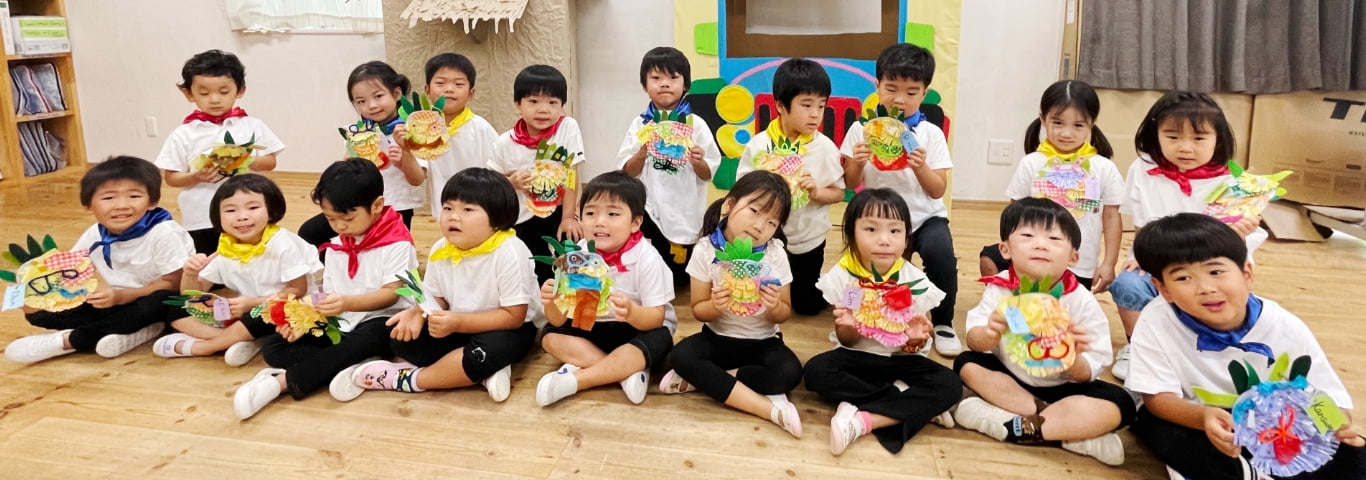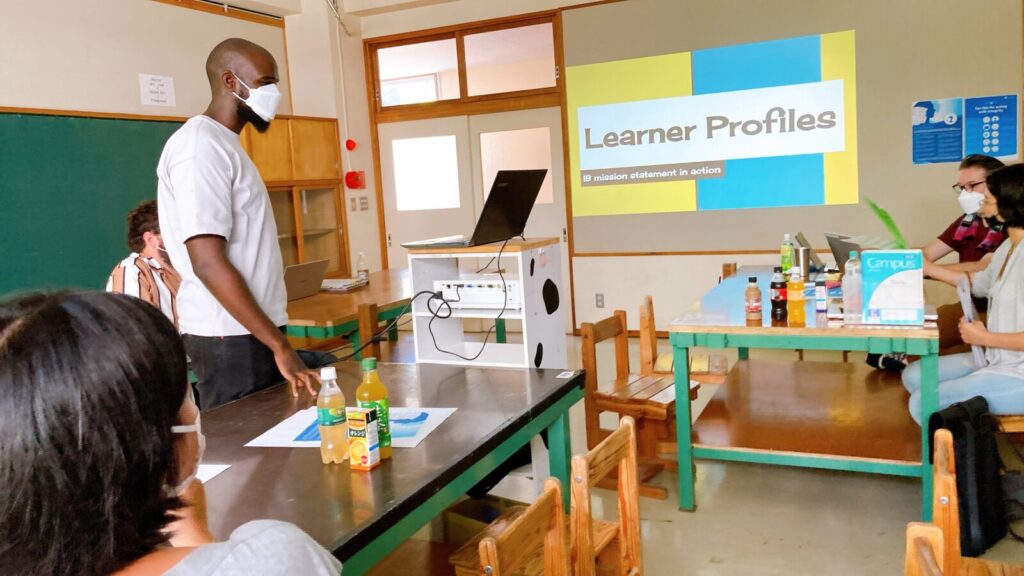
Hi, all. Hope you’re staying safe from the summer heat.
On July 8th was another crazy hot summer day in Gojo campus. This didn’t discourage our hardworking teachers and we all gathered in the Art room after lessons in order to participate in a short class prepared by Mr. Thapelo, the Grade 3 homeroom teacher.
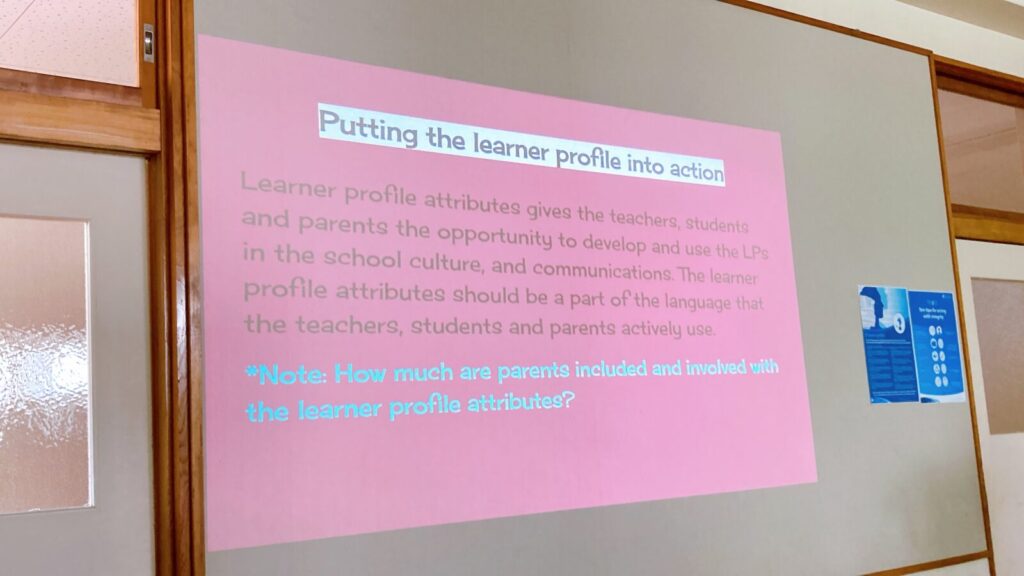
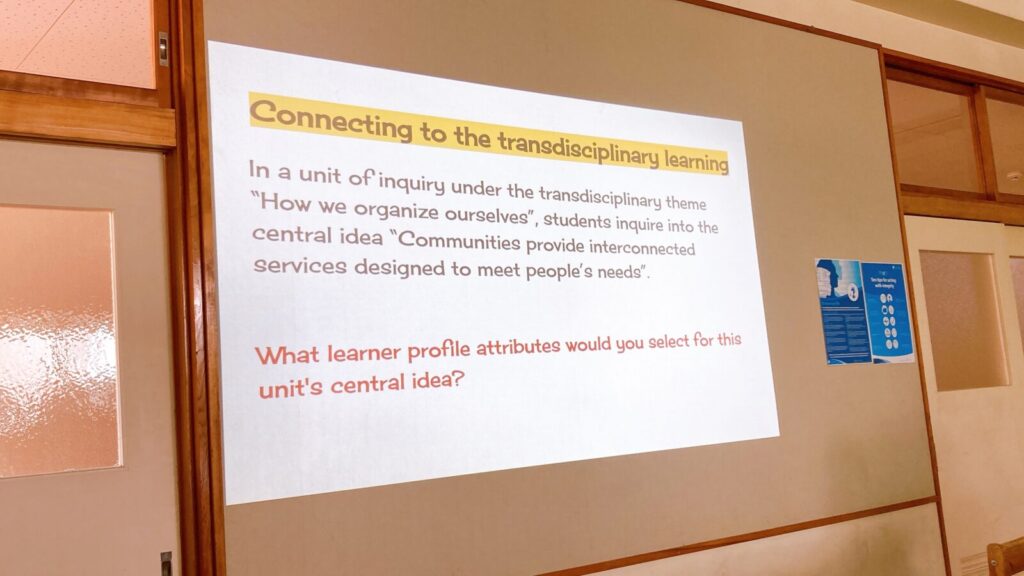
Mr. Thapelo researched two of the pillars of the IB program: the Learner Profile and the Approaches to Learning. In essence, the Learner Profile shows what kind of person we want all of our students to develop into, and is usually defined by the ten learner profile attributes shown in the diagram below. The Approaches to Learning are basically the skills we think students should develop and be able to showcase, divided into five categories: thinking skills, self-management skills, research skills, communication skills and social skills. The concrete skills within each group are planned by the learners or teachers of a grade level, or the school as a whole.
An interesting discussion ensued. A question was posed on whether it is more important for students to memorize the Learner profile attributes or to show them through their behavior?
The answer is logical: of course it is essential for the students to act in the spirit of the Learner Profile throughout their school and out of school time.
This should be our priority. But, we also agreed that it is important for the students to know the related vocabulary, for this will enable them to discuss their feelings and learning progress more confidently. It will also make it easier for them to progress to a new grade level and have talks with many different teachers. Said vocabulary is also widely used in all IB World schools, so students can feel more comfortable as being part of the worldwide IB family of learners.

Teachers shared ideas on how we can help students acquire the said vocabulary. In the early years, the students could be offered visual aids; i.e. pictures of themselves or other learners exhibiting the Learner Profile attributes and the Approaches to Learning. In higher grade levels, the students could discuss the meaning of each Attribute and brainstorm how they (or others) could showcase it.
These tips could be used at home as well. Discuss the IB vocabulary with your child, ask them which skill they developed today or which Learner Profile attribute they showed, write them on a piece of paper and put them up on a wall, make illustrations of each, try to include the attributes in your daily conversation as much as you can, and so on. There are many possibilities. 💡
皆さん、こんにちは。夏の暑さに負けず、元気にお過ごしでしょうか🌞
7月8日のPYPCミーティングについてお話しします。私たちは授業後、3年生の担任であるTapelo先生が準備した短いWorkshopに参加するために図工室に集まりました。
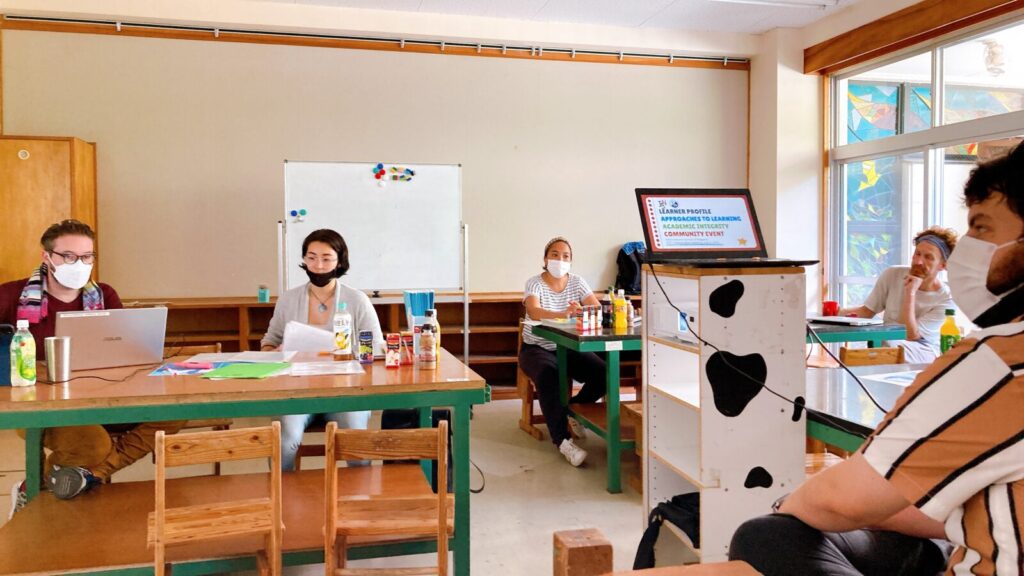
Thapelo先生は、IBプログラムの2つの柱である「学習者像」と「学習へのアプローチ」について研究してくれました。学習者像とは、生徒がどのような人間になってほしいかを示すもので、通常、10の学習者像の属性で定義されます。「学習へのアプローチ」は、基本的に私たちが考える生徒が身につけ、発揮すべきスキルのことで、「思考スキル」「自己管理スキル」「リサーチスキル」「コミュニケーションスキル」「ソーシャルスキル」の5つのカテゴリーに分類されます。各グループの中の具体的なスキルは、学習者あるいは学年の先生方、あるいは学校全体で計画します。
Workshop内では興味深い議論が展開されました。学習者像の属性を暗記することが重要なのか、それとも行動で示すことが重要なのか、という質問です。答えは論理的です。もちろん、生徒が学校でも学校外でも、ずっとLearnerプロファイルの精神に則って行動することが不可欠です。これは私たちの優先事項であるべきです。しかし、私たちは、生徒自身が、関連する語彙を知ることが重要であることにも気が付きました。そうすることで、生徒たちは自分の気持ちや学習の進捗状況について、より自信を持って話し合うことができるようになるからです。また、新しい学年に進級し、さまざまな先生と話をすることも簡単になります。また、この語彙はIBワールドの全校で広く使われているため、生徒は世界中のIB学習者ファミリーの一員であることをより実感することができます。
先生方は、生徒がこの語彙を習得するためにどのような手助けができるのか、アイデアを出し合いました。低学年のうちは、学習者像の属性や学習へのアプローチを示している自分や他の学習者の写真など、視覚的な補助を与えることができます。高学年では、各属性の意味について話し合い、自分(または他の人)がどのようにそれを示すことができるかをブレインストーミングすることができます。
こういったヒントは、家庭でも活用することができます。IBの語彙について子どもと話し合う、今日はどのスキルを伸ばしたか、どのLearner Profileの属性を見せたか尋ねる、紙に書いて壁に貼る、それぞれのイラストを作る、日常会話になるべく属性を入れる、などなど。いろいろな可能性があります。💡
Igor(PYPC)
